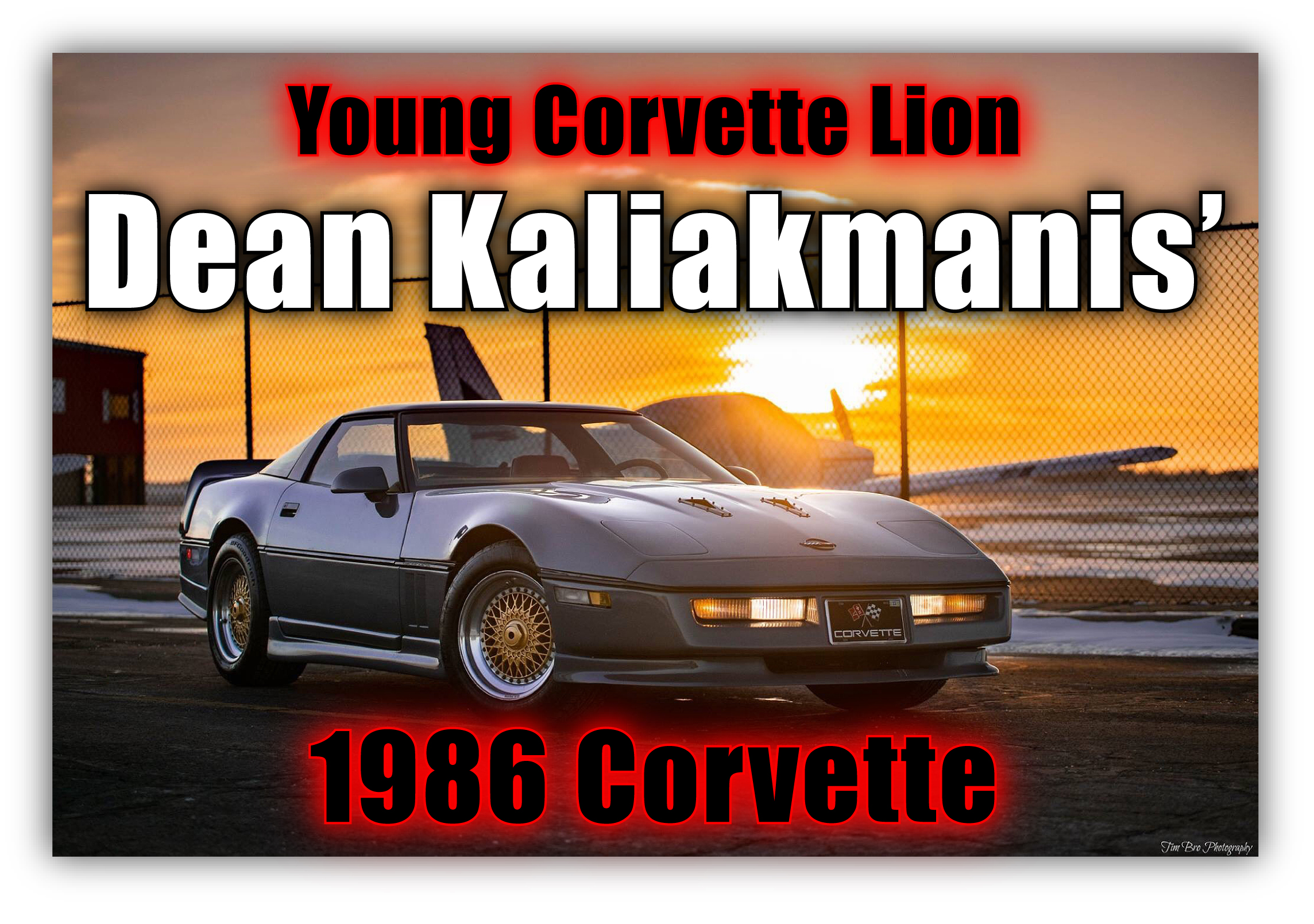A 16-Year-Old Young Lion’s First Vette
Dateline: 7-4-20 This story was originally published in the August 2019 issue of Vette Vues Magazine, Photos from Dean Kalliakmanis Collection) – There’s a popular misconception that you need buckets of cash to have a really cool Corvette. A lot of that has to do with the fact that new Corvettes have always been premium-priced automobiles. All the way back to the beginning in 1953, the Corvette was a Cadillac-priced car. As of this writing (late May 2019), the official base price of a 2019 Corvette is $56,995, and a fully maxed out 2019 ZR1 can cost over $150,000! Also, when you see guys driving Corvettes, they usually have silver or white hair, or no hair at all. It is true that many guys in their 60s and 70s finally get that Vette they always wanted.
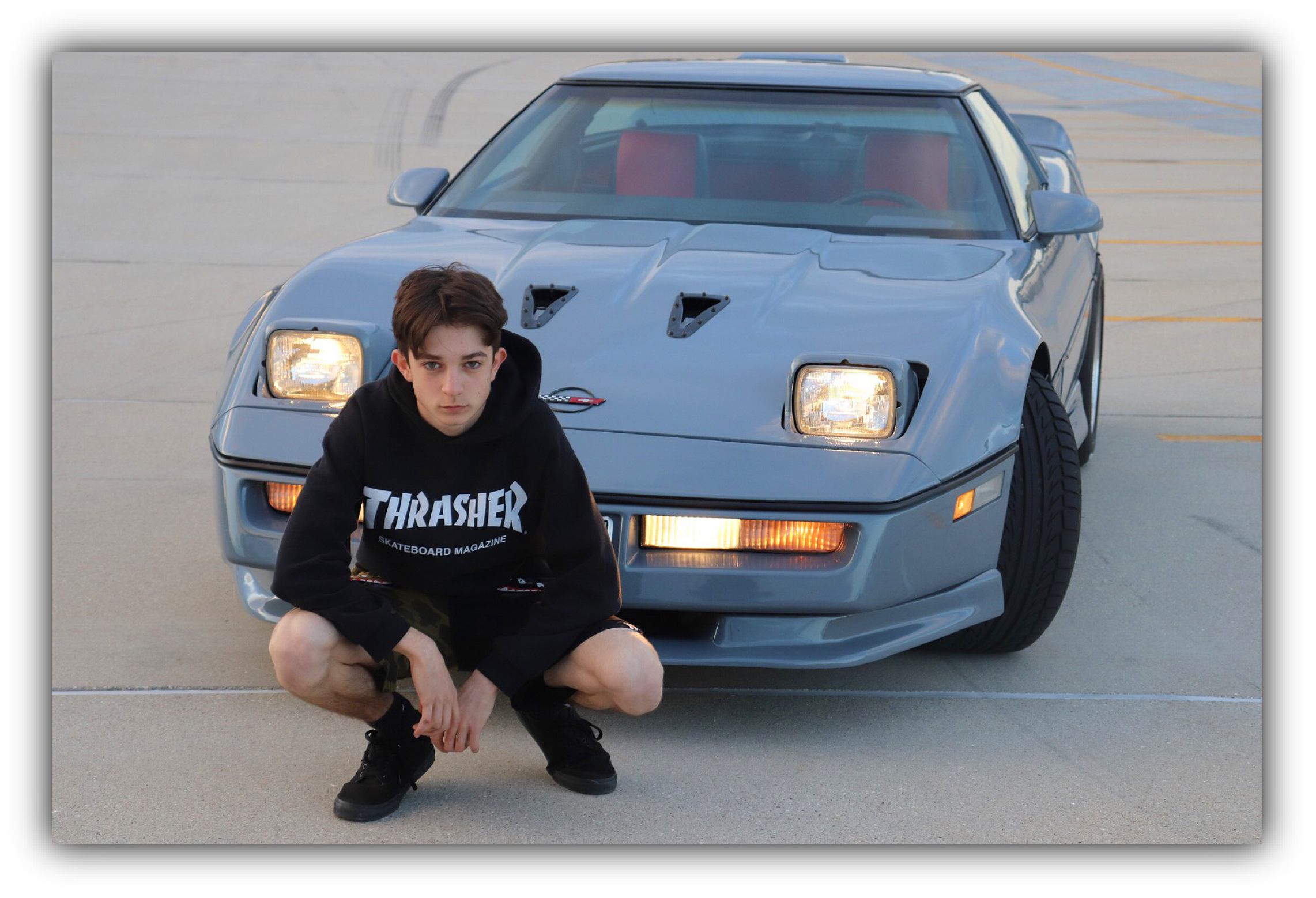
It is a perception problem that even Corvette chief engineer Tadge Juechter says they are struggling with. For us Baby Boomers that grew up in the ‘50s, ‘60s, and ‘70s in the era of the great American car culture, we thought the love affair with cars was permanent. The big question for Juechter and his designers is; how do we make Corvettes relevant and exciting to younger buyers, many of whom aren’t even interested in cars.” But, where there’s a will, there’s a way. So, the question is this, where does the “will” come from? That’s almost a spiritual question, but what really helps is growing up in a car-oriented household.
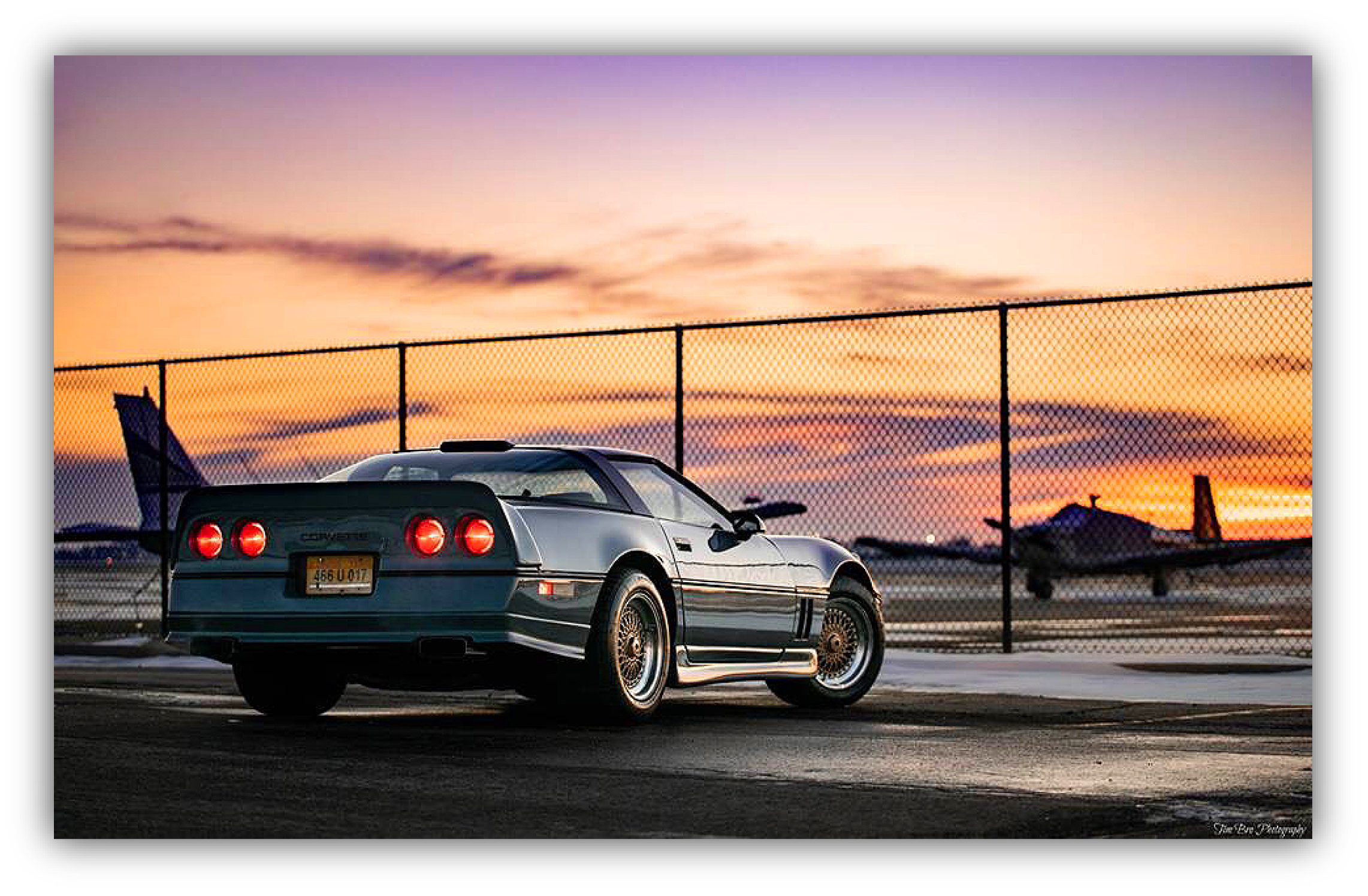
Hot rodding started in the 1930s during the Depression years. Souped-up cars were scrappy machines, literally built from scrap cars. Hot rodding required a lot of dirty scrounging around in junkyards, service stations, and used car lots. Being a hot rodder took sweat, blood, and ingenuity. While mega-buck restomod cars are all the rage today and grace the paper and digital pages of automotive publications, the old hot rodder model can still work, if you are willing to work and get dirty.
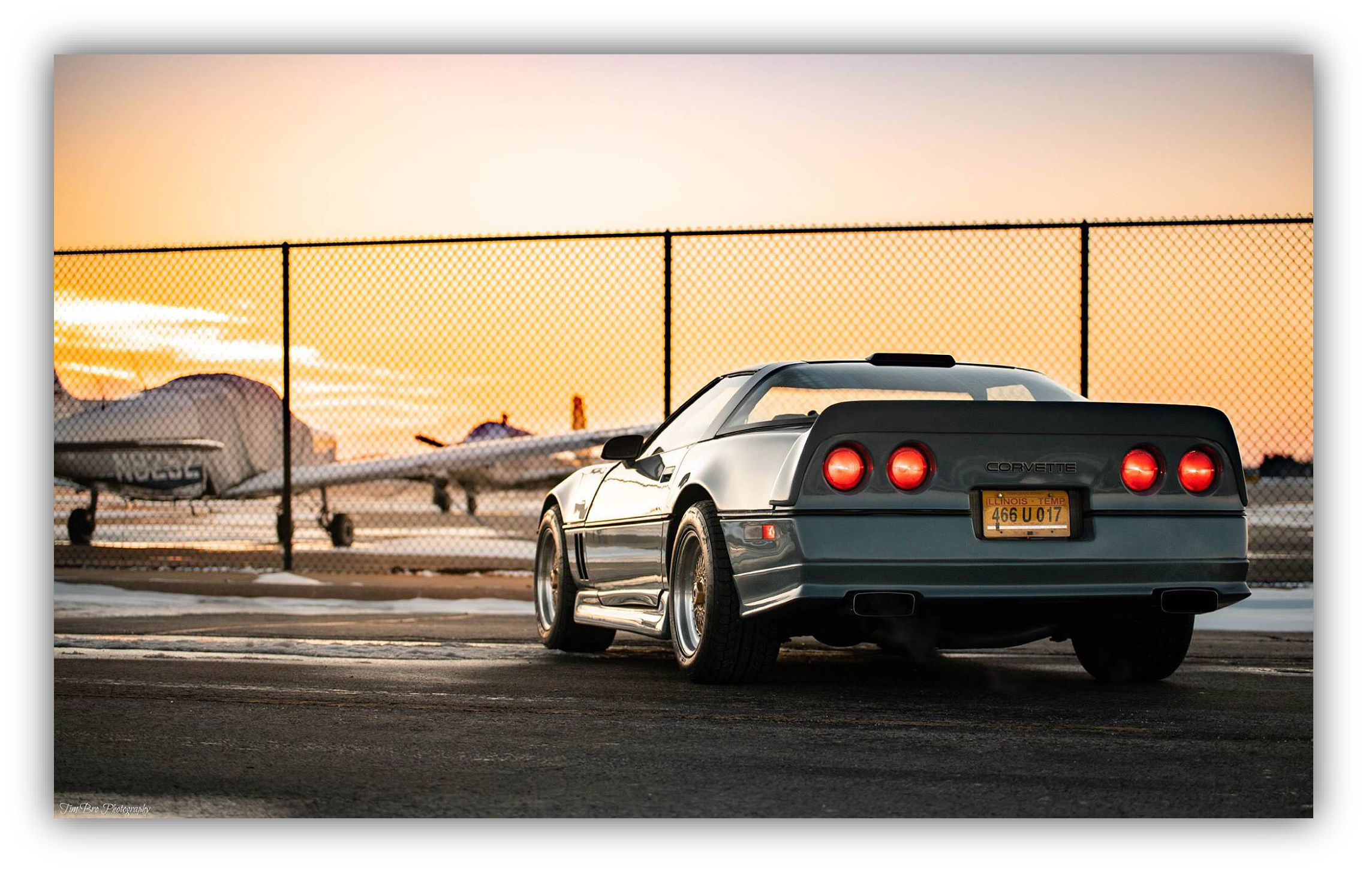
Dean Kaliakmanis of Burlington, Illinois is a 16-year old sophomore at the Burlington Central High School. Dean got the car bug from his Dad, Dean Kaliakmanis. Dean Sr. is a group health insurance professional but has been a car guy since he was a teenager. Along the way, Dean’s dad has owned five Corvettes, including; a 1969 Stingray, a 1977 Corvette, a 1985 Corvette, a 1987 Corvette, and a 1993 Callaway Corvette. The 1987 Corvette and the 1993 Callaway, plus a 1971 Z-28 Camaro are Dean Sr.’s current rides. Obviously, Dean the younger has been around Corvettes all his young life, so it’s no surprise that he would want to follow in his Dad’s footsteps.
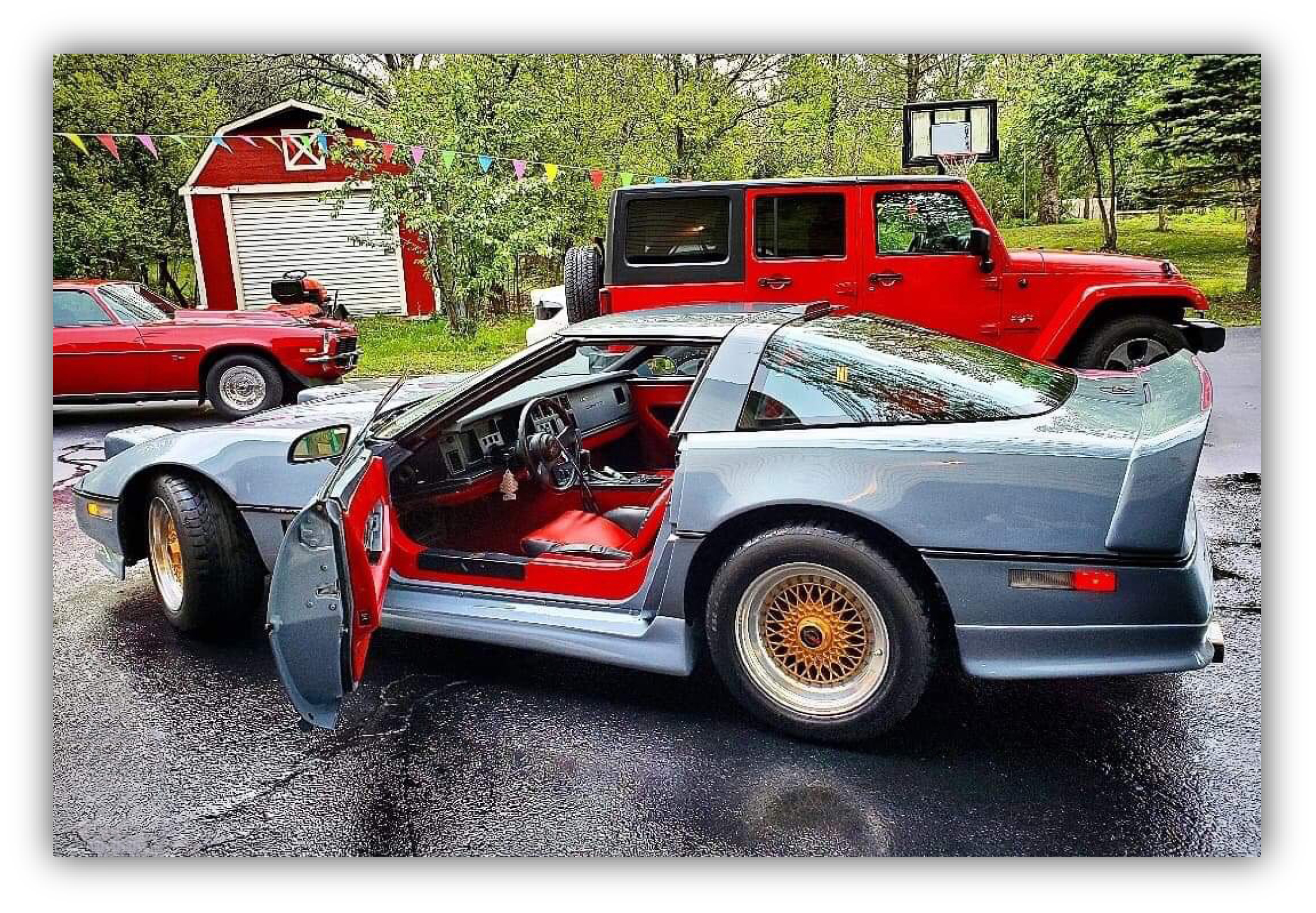
As a little kid, Dean was so into cars that with his Dad’s help, he started flipping cars when he was just ten-years-old! Now, at the age of sixteen, he has flipped five cars. One of the keys to making money flipping cars to find cars that need lots of TLC, buy them for not much money, clean them up, get them in running shape, and then sell them. It takes a special eye to be able to look beyond the dirt, grime, missing parts, and stinky smells.
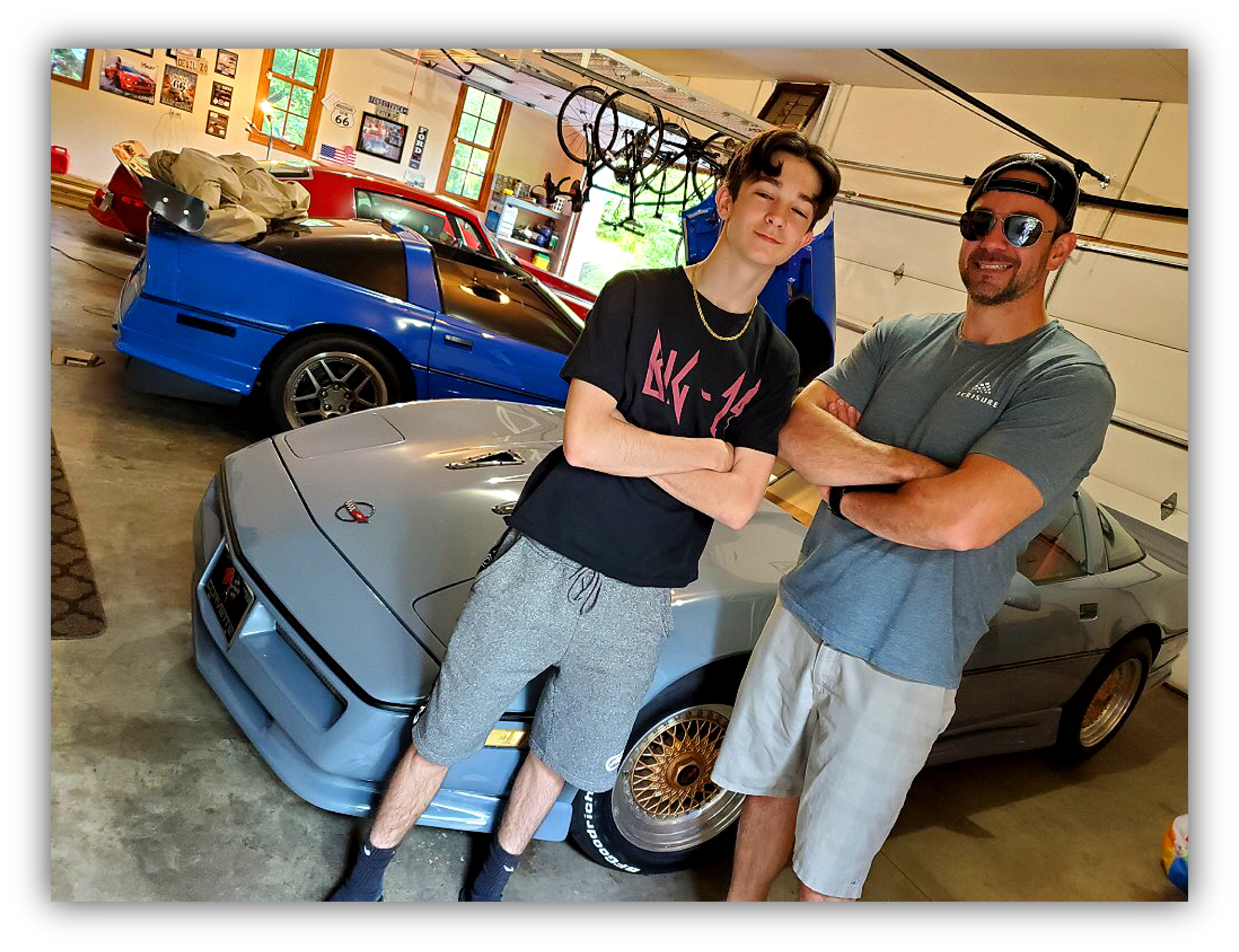
Being around his Dad’s Corvettes and looking for cars to flip, it should be no surprise that eventually Dean would find a neglected old Corvette. Currently, C4 Corvettes (1984-1996) are at the bottom of the pecking order of used Corvettes. Except for the special edition C4s, hardly anyone wants them because the newer Corvettes were so much better. C4 ZR-1 Corvettes are especially under-valued. Later-year C3s were in the same position ten years ago.
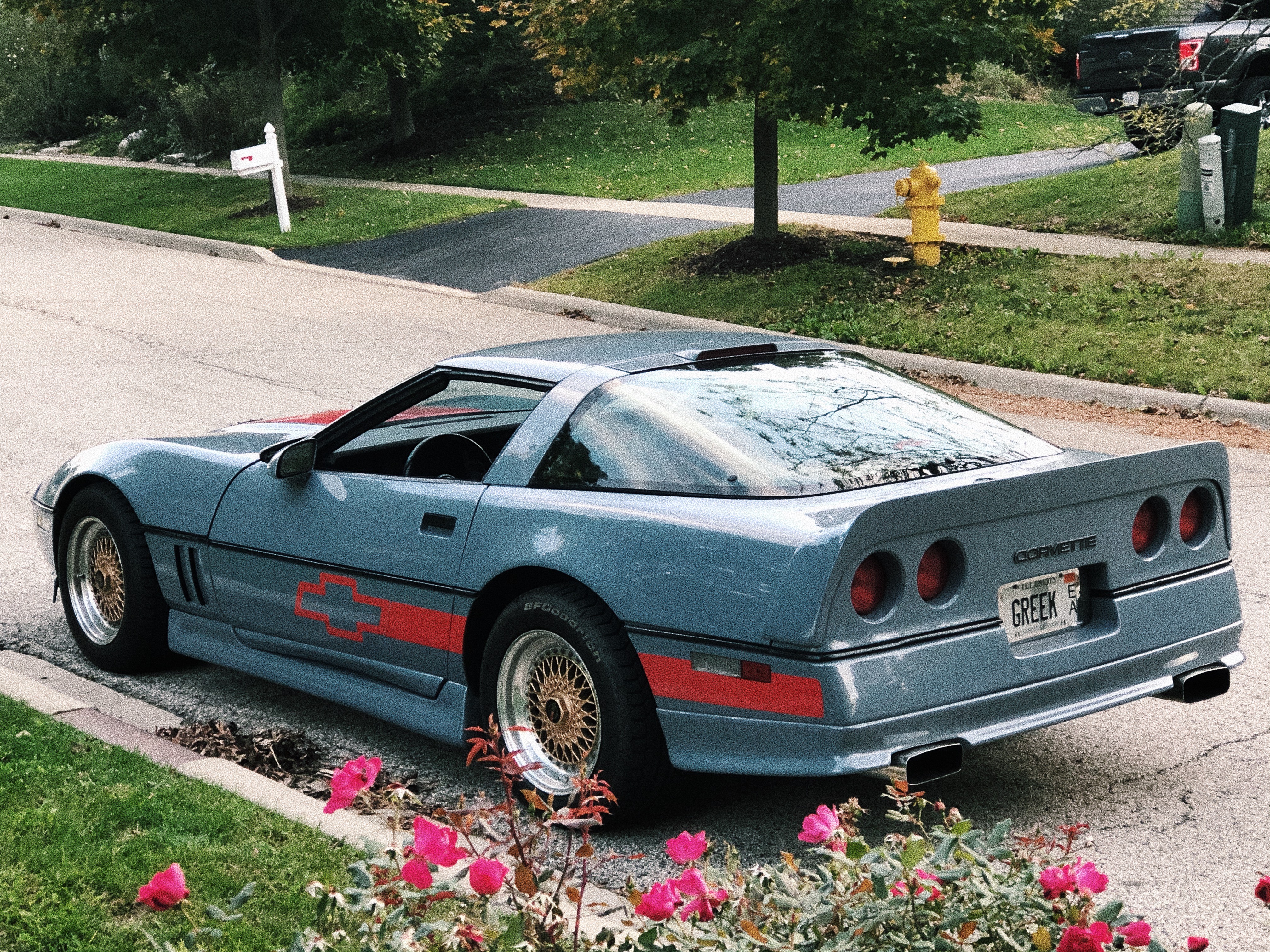
But back in 1985, Car and Driver pronounced the Corvette, “The Fastest Car In America” because the car had a top speed of 150-mph. Corvettes so dominated the SCCA Showroom Stock Series that at the end of the 1987 season, SCCA kicked the Corvettes out of the series because they were too fast and unbeatable.
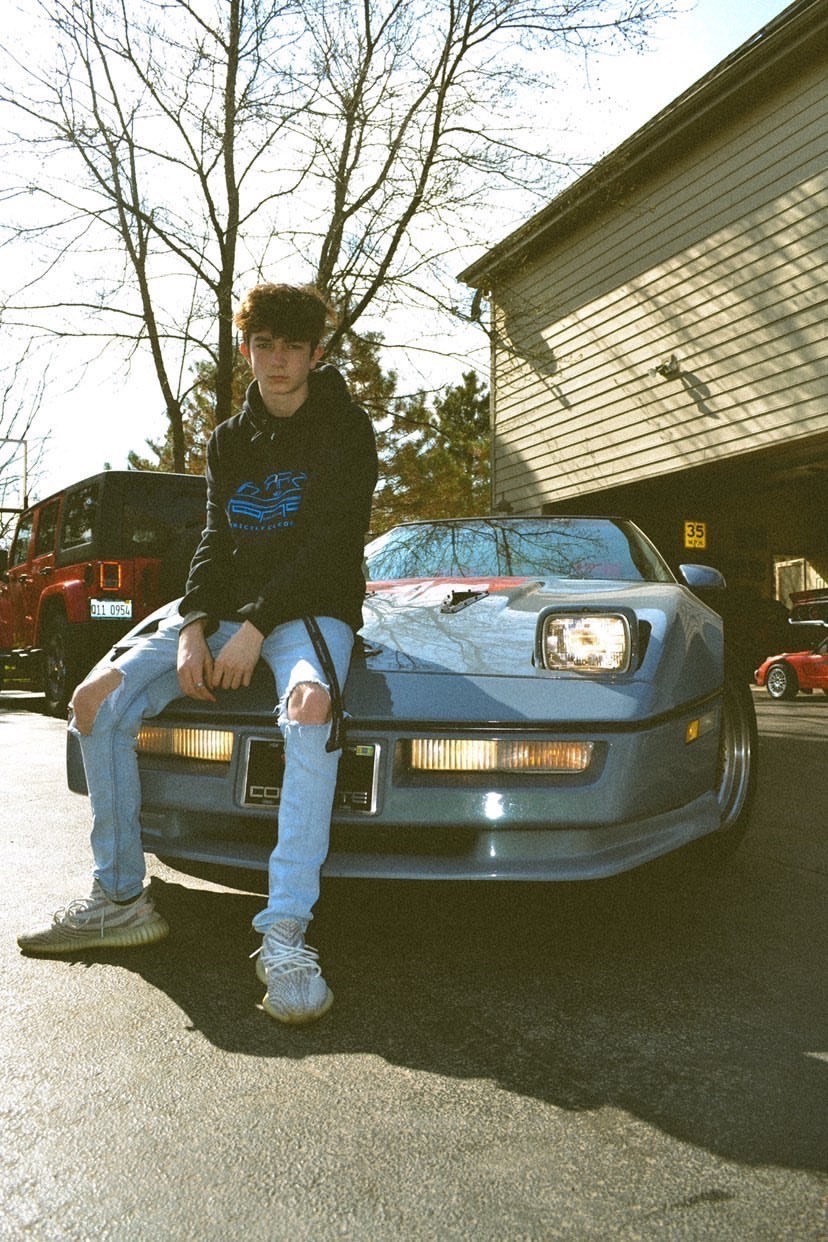
While subsequent generation Corvettes are better-engineered cars, C4s can be made into stout performers. C4s are powered by electronic 0.fuel-injected versions of the classic small-block Chevy engine that is legendary for its versatility and ease at getting respectable power. So when Dean found a 1986 Corvette in a barn, he saw potential and was able to see past the car’s cosmetic issues.

The 1986 Corvette was in terrible condition after many years of neglect and storage in a barn. The front bumper cover was long gone and someone had started sanding the original red paint. But it was the car’s interior that was the worst. Dean describes that car this way; “The interior was complete but very dirty. Cats must have gotten into the car and were using it as a litter box. The smell of cat pee was overwhelming. The front seats needed new skins and the lift-off top was cracked. But everything was there; it was just very dirty and stinky. The one feature I really liked was the ’80s snowflake racing-style wheels. The car was really in bad shape and very one though I was crazy.”
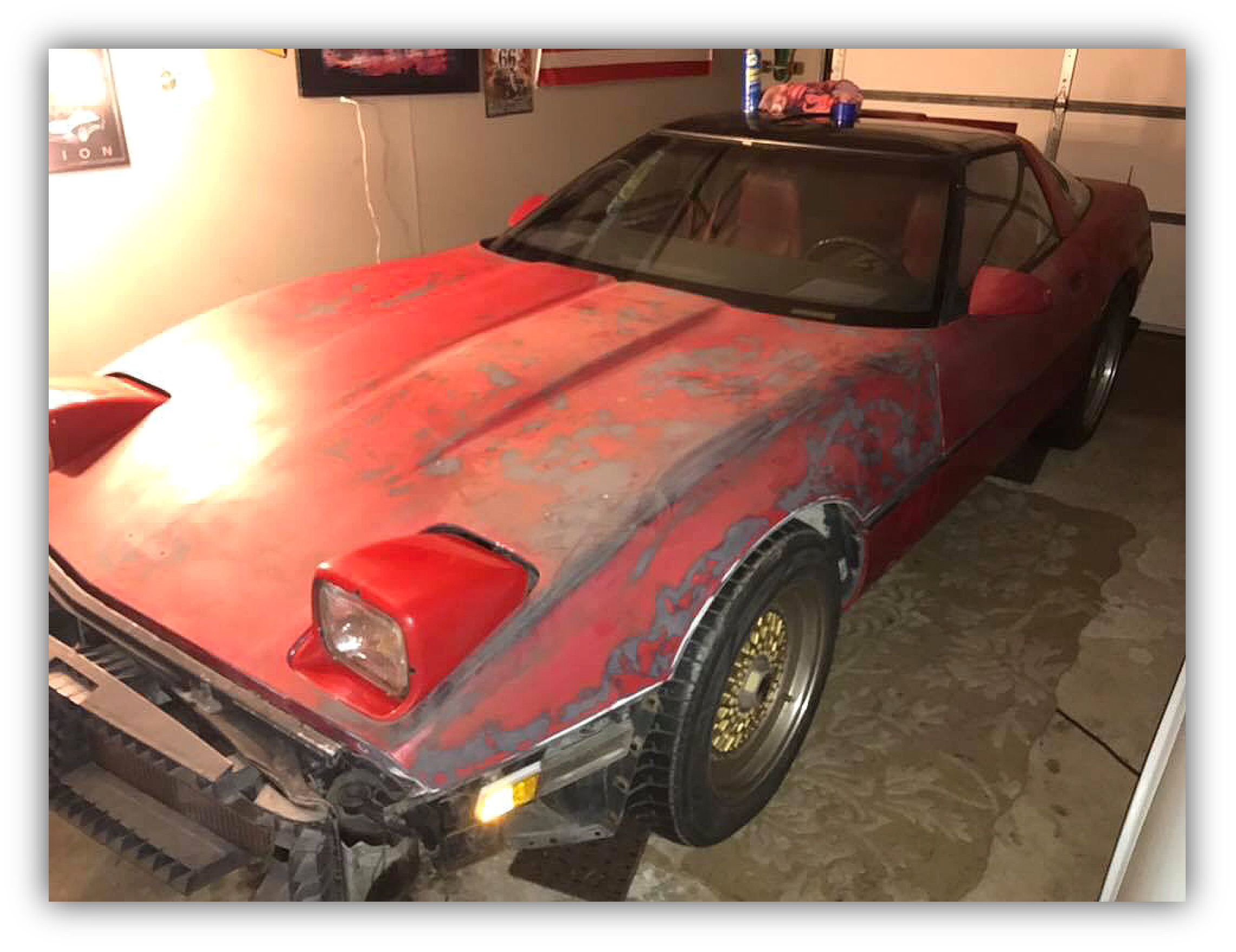
Dean got the car for a straight trade for a $500 old Lexus SC400. With a deal like that, you don’t mind dumping a few thousand dollars and a lot of sweat equity into an old car. After getting the car, Dean and his Dad determined that beyond the missing and soiled parts, the car was in okay but very tired shape. The engine was pulled and received a basic rebuild and a new fuel pump. No performance enhancements were made to the L98 engine, as Dean’s Dad felt that 235-horsepower was enough for his 16-year-old son; besides, his son did not yet have his driver’s license!
The automatic transmission was deemed in good shape. And lastly, the 1986 exhaust system; from the manifolds back, was in need of replacement. Dean found a complete exhaust pipe for a 1992 LT1 that included the rectangular exhaust tips. The suspension received new bushings and shocks, and parts were cleaned up. The brakes were good but got new pads and resurfacing.
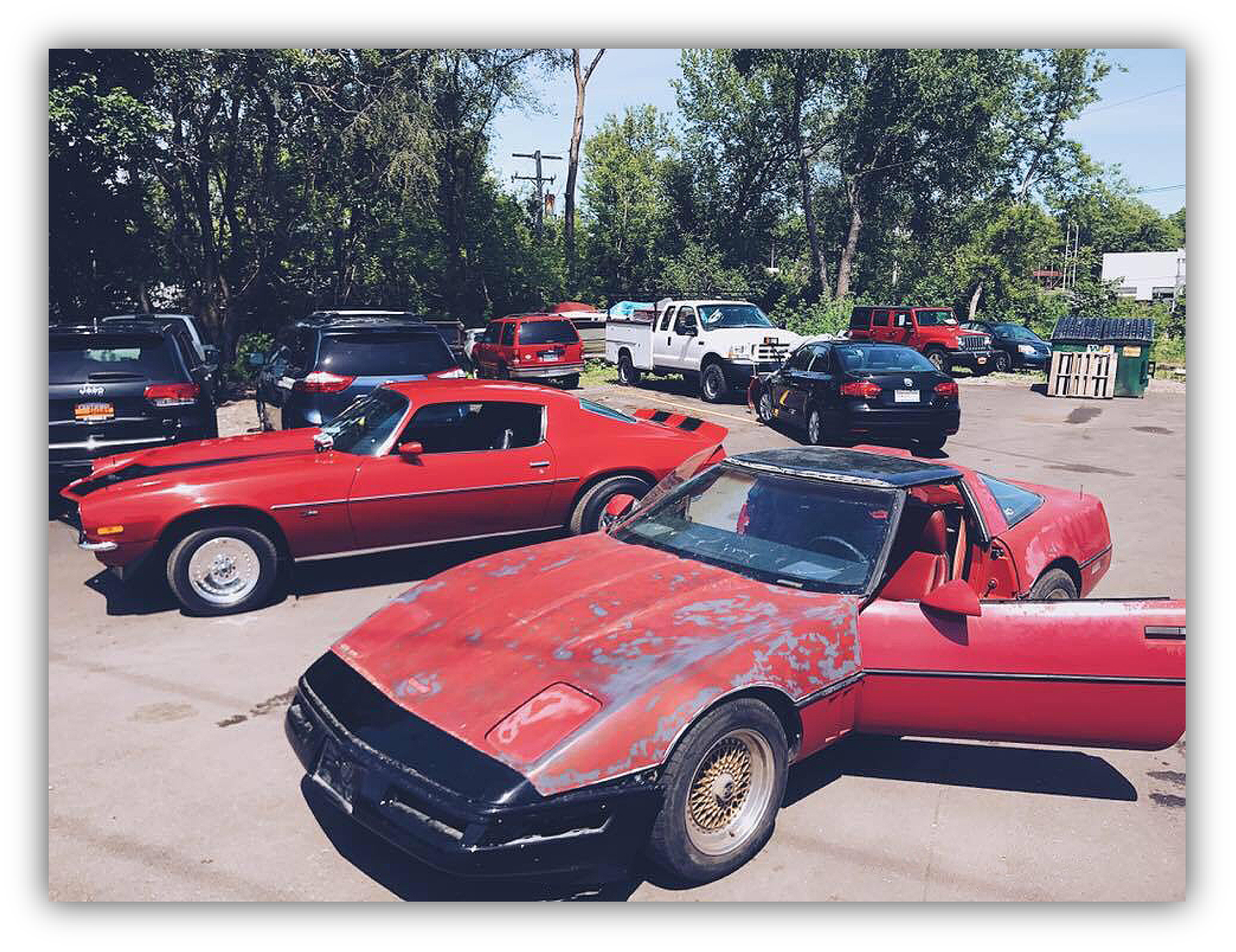
Dean found a front bumper cover and a used body kit that included the front spoiler, side skirts, and a rear spoiler for $200 from a friend. A used roof panel was found for just $200. Dean and his Dad finished the paint prep work in primer black and painted the car Honda Civic Type R “Sonic Gray Pearl”. With the addition of the body kit, Dean felt the hood needed something extra. Dean found a set of $200 carbon fiber NACA scoops, cut them into the clamshell hood, and fastened them with machine screws.
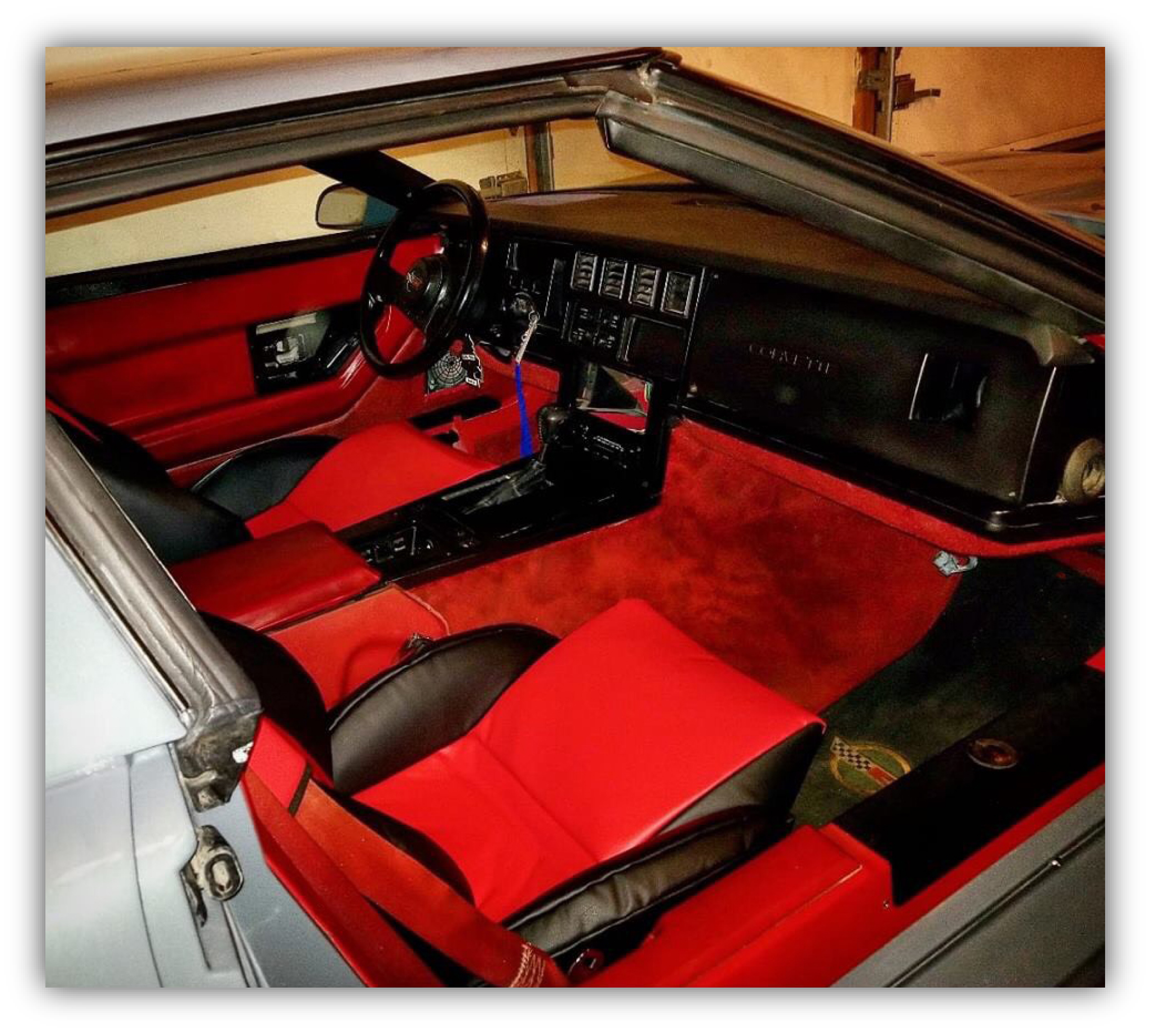
The interior was the most challenging part of the build. The factory carpeting and padding had to be removed and then the floorboards were thoroughly cleaned. The door panels console, steering wheel, and dash were dirty but under the dirt, the parts were in good condition. Dean bought a set of racing seats but they were too tall for the car. Instead, Dean got new leather skins to go over the existing cushioning that was in good condition. The black bolsters tie in beautifully with the rest of the interior’s color pattern; classic black and red.
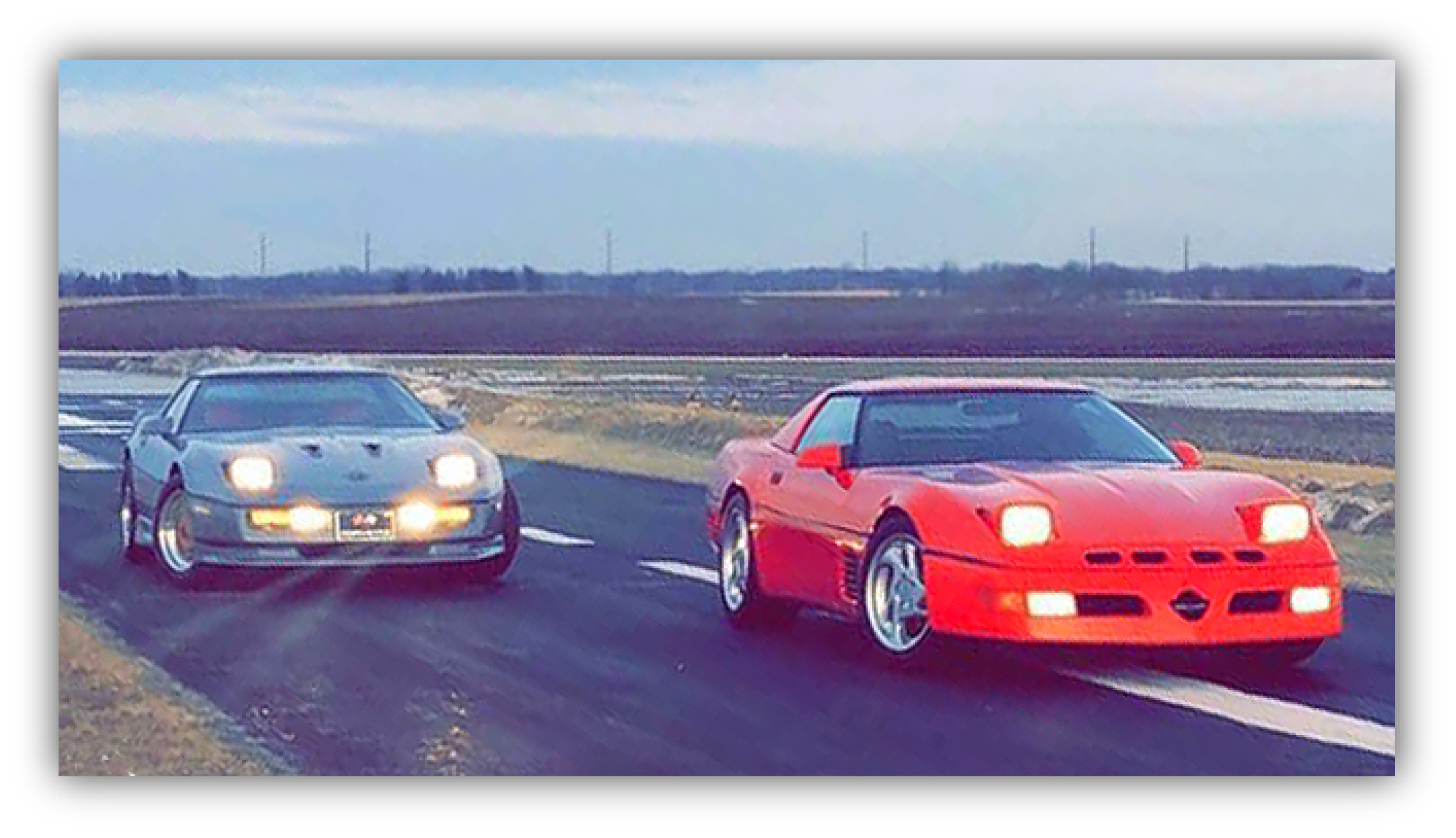
I asked Dean about future plans for the car and he said, “I’d really like to get a 383 stroker like what my Dad has in his blue ’87 Corvette. Maybe a set of track wheels and new tires with raised white lettering; and maybe a set of the Corvette Challenge logos for the side and some racing decals. I like the racer look. Other than that, I’m really happy with how my car came out. For me, this is a keeper that maybe some day I’ll be able to give it to my son.”
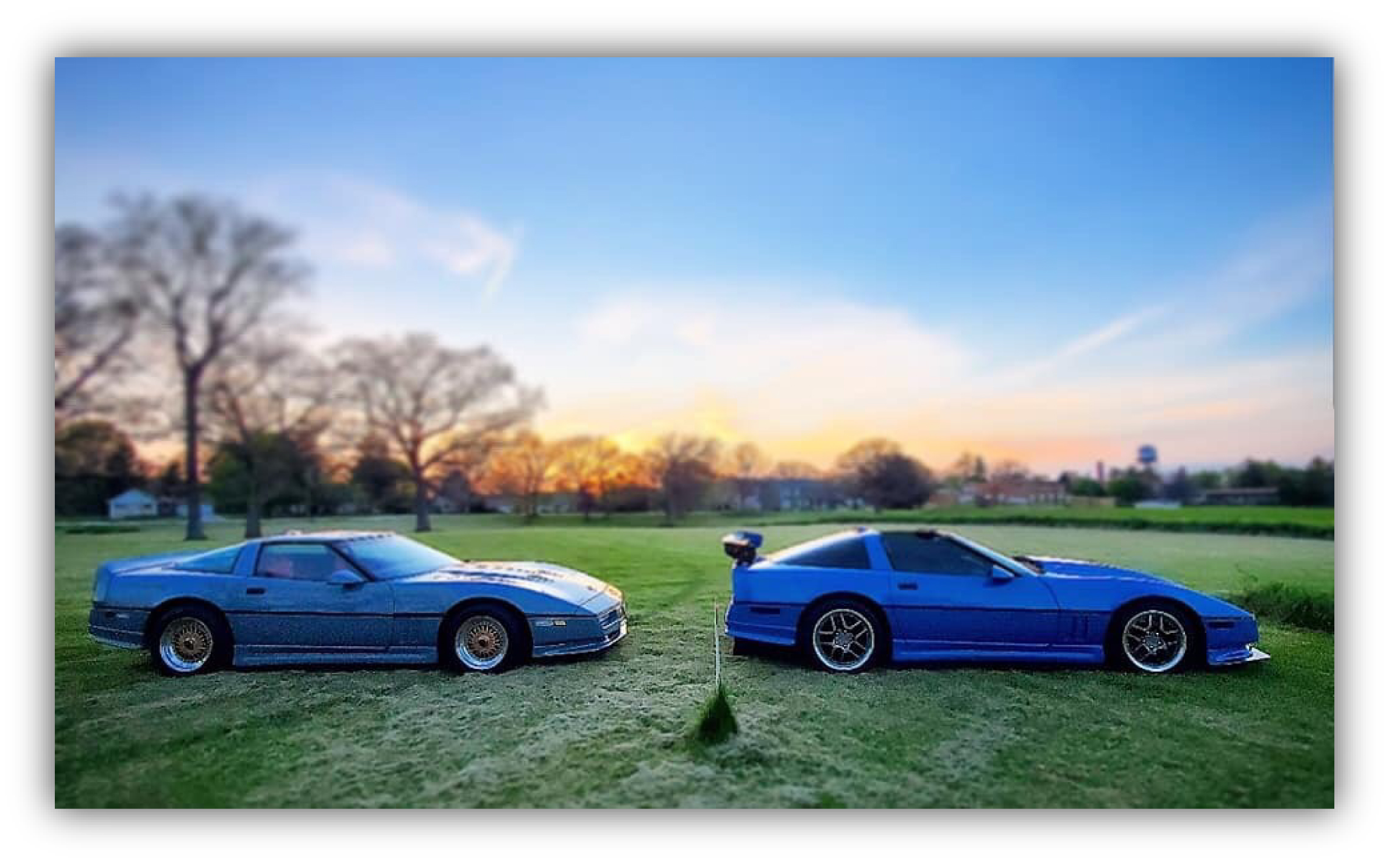
We also want to mention the 1971 Z-28 Camaro, the blue ’87 Corvette, and the red Callaway. Those are Sr. Dean’s cars. Dean had always liked the early ‘70s Camaros, especially the Z-28. The car is obviously not stock and is a classic ‘70s Street Machine. The Camaro has a fiberglass L88 Corvette hood dome, instruments are attached to the base of the hood, and the suspension has been raised for that Super Stocker drag car look.
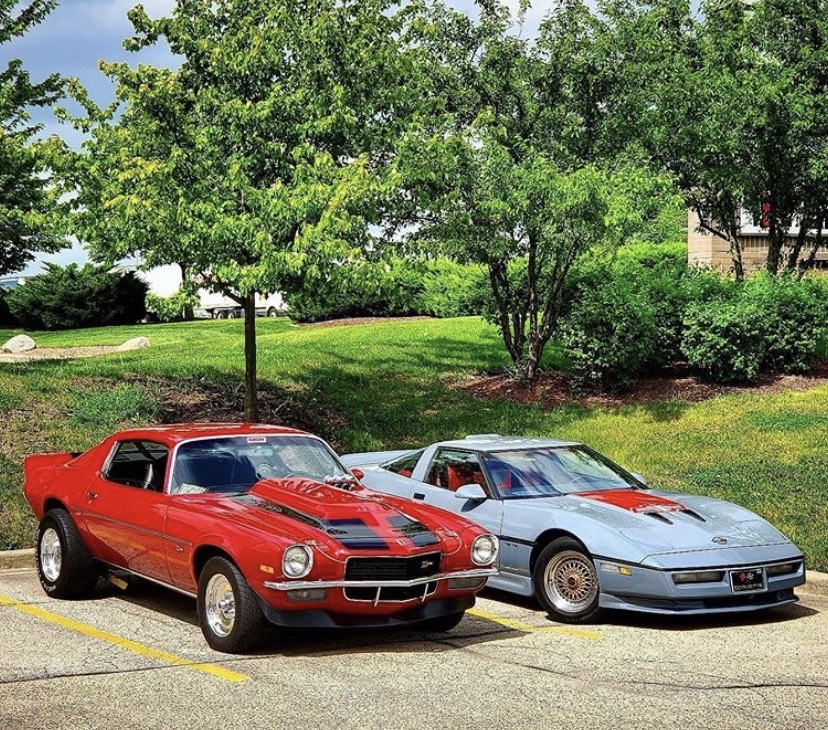
Dean’s Viper Competition Blue ’87 Corvette has an all-out aero body kit that includes a tall rear wing and a racer-like front splitter. C5 Z06 wheels replaced the stock ’84 – ’87 turbine wheels. Under the hood is a 383 stroker SBC making around 550-horsepower. The 1993 Callaway Corvette is Dean’s latest addition to the family and is wearing bright red paint and a very unusual set of six-spoke allow wheels that are similar to those on the 1992 Sting Ray-III.

In January 2019 Dean got his driver’s license. Mostly he drives his Corvette in the evenings and weekends and occasionally takes the car to school. Incredibly, he gets a little heat from a few students that assume he’s a rich kid. No, he’s just a Car Guy and likes to get dirty, making something special from a car that was heading to the junkyard. Congratulations Dean, you are for-real “Car Guy”. The Car Guy’s Motto is, “Be a real car guy, or be gone!” – Scott
PS – Special thanks to Vette Vues Magazine. For subscription information, CLICK HERE.

